Appendix A provides supporting material for CaPI’s analysis of Initiative 1631 (Protect Washington Act) Prospects for eliminating 20 million tons of carbon pollution annually in 2035.
Summary
In this Appendix, we present detailed projections for the two available funds scenarios, each with four investment pathway cases that were the focus of this study:
- The “reduction-centric” scenario in which almost all Clean Air & Clean Energy funds plus utility credits go towards direct carbon reduction projects, and the “reduction-peripheral” scenario in which a substantial portion of Clean Air & Clean Energy expenditures go towards non-carbon reducing priorities. Each scenario is run assuming four different investment pathways.
- Deployment-driven: Investments take the cheapest, “low-hanging fruit”, first and costs of investments subsequently increase 5% per year;
- Technology-driven: Investments are initially more expensive, but decrease 5% per year as technology learning accelerates;
- No-Change: Investment cost remain unchanged through the 2020-2035 window;
- Averaged: The average of the three above pathways.
Consistent Parameters Across All Scenarios:
- Exemptions range from 27% to 30% of fossil fuel emissions in any given year.
- CTAM price elasticities are used for all scenarios, with modified elasticity of fuel switching for natural gas from coal to capture partial coal resource exemptions through 2025 and full coal resource coverage starting in 2026;
- Investments are in projects with an average lifetime of 10-years for subsequent carbon reductions.
- Program costs ($/tCO2e) are net of system inefficiencies including administrative costs and projects that fail to deliver or deliver more expensive than anticipated (or cheaper than anticipate) emissions reductions.
- Investments from utility retained credits go 100% towards reducing otherwise taxed fossil fuel emissions to meet requirement of investment plans that eliminate long-term fee obligation.
- Investments from board-controlled funds reduced other taxed and non-taxed emissions proportional to its share of statewide emissions (46% of emissions reductions associated with board funds reduce emissions from taxed sources).
- 1% of non-retained credits are towards overall administration costs.
Reduction-centric scenarios (Table B1)
- The following parameters are the same for each of the “reduction-centric” scenarios:
- Lower income energy burden increase is counteracted through programs that also reduce energy consumption and carbon. No direct bill assistance;
- Worker-transition fund averages $40 million per year through 2035, after $50 million total over the first four years ($49M per year from 2024-2035). Values are in constant 2017 USD.
Reduction-peripheral scenarios (Table B2)
- The following parameters are the same for each of the “reduction-peripheral” scenarios
- Elimination of energy burden increase on lower income households requires 26% of carbon fee revenues (equal to 37% of Clean Air & Clean Energy Account and Utility Credits);
- Worker-transition fund averages $120 million per year through 2035, after $50 million total over the first four years ($156M per year from 2024-2035). Values are in constant 2017 USD.
While total revenue numbers through FY2023 are consistent with OFM fiscal projections for I-1631, our apportionment of revenue follows a close reading of the initiative, notably Sections 3(2)(a) and 4(6)(o).1 These sections clearly outline that shares of total expenditures should be considered inclusive of utility credits. Our analysis of the OFM Fiscal Note suggests that the retained credits for the utility sector were not assumed to impact the allocation into new accounts under the Clean Up Pollution Fund, which is incorrect. The amount of credits does impact the expected allocation of revenue and therefore must be included to properly tabulate the funds made available to the various purposes as outlined in the initiative.
OFM modeled the initiative such that “following deductions for administrative costs, 70 percent of the balance in the Clean Up Pollution Fund will be deposited into the Clean Air and Clean Energy Account, 25 percent will be deposited into the Clean Water and Healthy Forests Investments Account and 5 percent will be deposited into the Healthy Communities Account.”
We believe this approach is incorrect, and leads to overstating the funds made available to the state in the Clean Air & Clean Energy Account, and understating the funds made available to water, forests, and healthy communities.
Table B1: Reduction-centric investment, revenue, and emissions outcomes
|
Investment Pathway: |
Deployment- |
No Change |
Tech- |
Averaged |
|
2020 investments ($/tCO2e) |
$22 |
$40 |
$74 |
$45* |
|
2035 investments ($/tCO2e) |
$46 |
$40 |
$34 |
$40* |
|
2026-2035 investment average ($/tCO2e) |
$38 |
$40 |
$43 |
$40* |
|
Revenue, through FY 2023 (nominal, corresponding to OFM Fiscal Note coverage), of which: |
$3.16 billion |
$3.20 billion |
$3.25 billion |
$3.22 billion |
|
Retained Credits |
$0.95 billion |
$0.99 billion |
$1.01 billion |
$0.99 billion |
|
Clean Air & Clean Energy Account |
$1.26 billion |
$1.26 billion |
$1.26 billion |
$1.26 billion |
|
Clean Water & Healthy Forests Account |
$0.79 billion |
$0.80 billion |
$0.81 billion |
$0.80 billion |
|
Healthy Communities Account |
$0.16 billion |
$0.16 billion |
$0.16 billion |
$0.16 billion |
|
Revenue, 2020-2035 (USD 2017), of which: |
$16.8 billion |
$17.8 billion |
$18.5 billion |
$17.9 billion |
|
Retained Credits |
$4.2 billion |
$4.7 billion |
$5.2 billion |
$4.8 billion |
|
Clean Air & Clean Energy Account, (including $ of worker-support) |
$7.4 billion |
$7.6 billion |
$7.7 billion |
$7.6 billion |
|
Clean Water & Healthy Forests Account |
$4.2 billion |
$4.4 billion |
$4.6 billion |
$4.4 billion |
|
Healthy Communities Account |
$0.8 billion |
$0.9 billion |
$0.9 billion |
$0.9 billion |
|
Year 2035 emissions reductions (million tCO2e) from investments |
20.4 |
20.2 |
20.1 |
20.2 |
|
Cumulative emissions reductions from investments (million tCO2e) |
254 |
196 |
155 |
190 |
Table B2: Reduction-peripheral investment, revenue, and emissions outcomes
|
Investment Pathway: |
Deployment- |
No Change |
Tech- |
Averaged |
|
2020 investments ($/tCO2e) |
$9.5 |
$18 |
$34 |
$21 |
|
2035 investments ($/tCO2e) |
$20 |
$18 |
$16 |
$18 |
|
2026-2035 investment average ($/tCO2e) |
$16 |
$18 |
$20 |
$18 |
|
Revenue, through FY 2023 (nominal, corresponding to OFM Fiscal Note coverage), of which: |
$3.10 billion |
$3.19 billion |
$3.24 billion |
$3.20 billion |
|
Retained Credits |
$0.57 billion |
$0.61 billion |
$0.63 billion |
$0.61 billion |
|
Clean Air & Clean Energy Account |
$0.77 billion |
$0.78 billion |
$0.78 billion |
$0.78 billion |
| Direct Bill Assistance |
$0.82 billion |
$0.85 billion |
$0.87 billion |
$0.86 billion |
|
Clean Water & Healthy Forests Account |
$0.77 billion |
$0.80 billion |
$0.81 billion |
$0.80 billion |
|
Healthy Communities Account |
$0.15 billion |
$0.16 billion |
$0.16 billion |
$0.16 billion |
|
Revenue, 2020-2035 (USD 2017), of which: |
$16.1 billion |
$17.2 billion |
$18.1 billion |
$17.4 billion |
|
Retained Credits |
$2.2 billion |
$2.6 billion |
$2.9 billion |
$2.7 billion |
|
Clean Air & Clean Energy Account, |
$4.8 billion |
$4.9 billion ($1.9 billion) |
$5.0 billion ($1.9 billion) |
$4.9 billion |
| Direct Bill Assistance |
$4.2 billion |
$4.5 billion |
$4.7 billion |
$4.5 billion |
|
Clean Water & Healthy Forests Account |
$4.0 billion |
$4.3 billion |
$4.5 billion |
$4.3 billion |
|
Healthy Communities Account |
$0.8 billion |
$0.9 billion |
$0.9 billion |
$0.9 billion |
|
Year 2035 emissions reductions (million tCO2e) from investments |
20.2 |
20.2 |
20.4 |
20.5 |
|
Cumulative emissions reductions from investments (million tCO2e) |
283 |
213 |
166 |
206 |
Reduction-Centric Scenario Charts
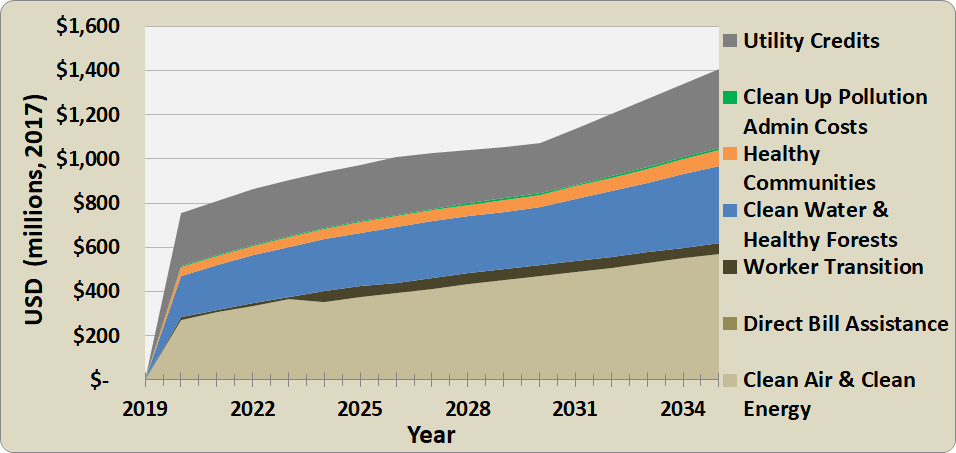
Reduction-centric scenario, Deployment-Driven Investment Pathway, Fee Allocation
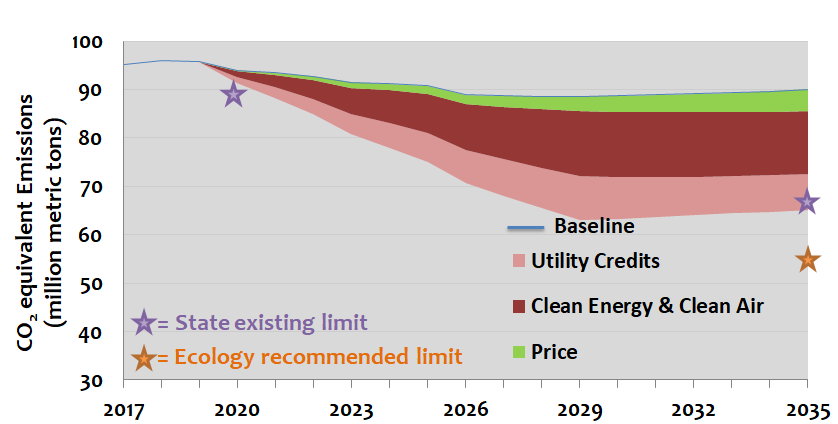
Reduction-centric scenario, Deployment-Driven Investment Pathway, GHG Emissions
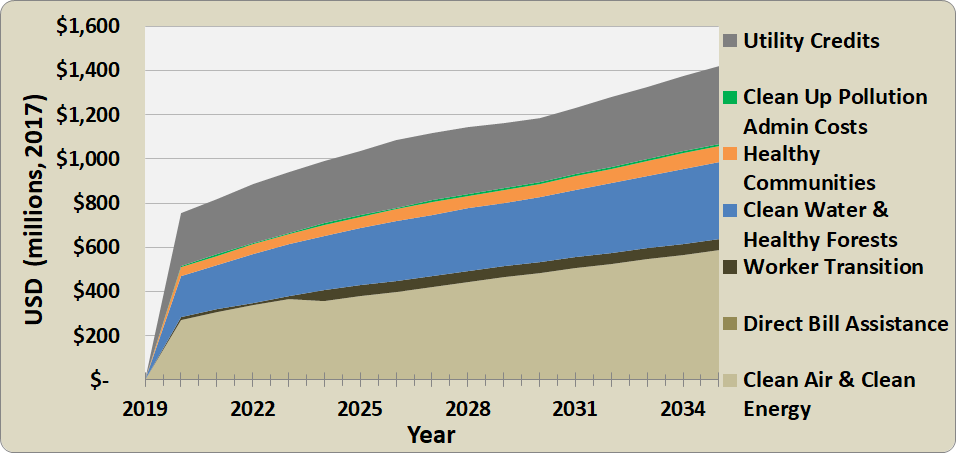
Reduction-centric scenario, No Change Investment Pathway, Fee Allocation
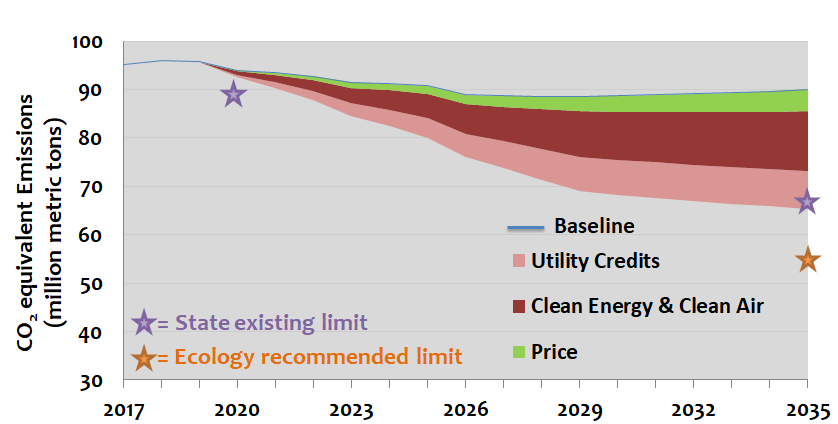
Reduction-centric scenario, No Change Investment Pathway, GHG Emissions
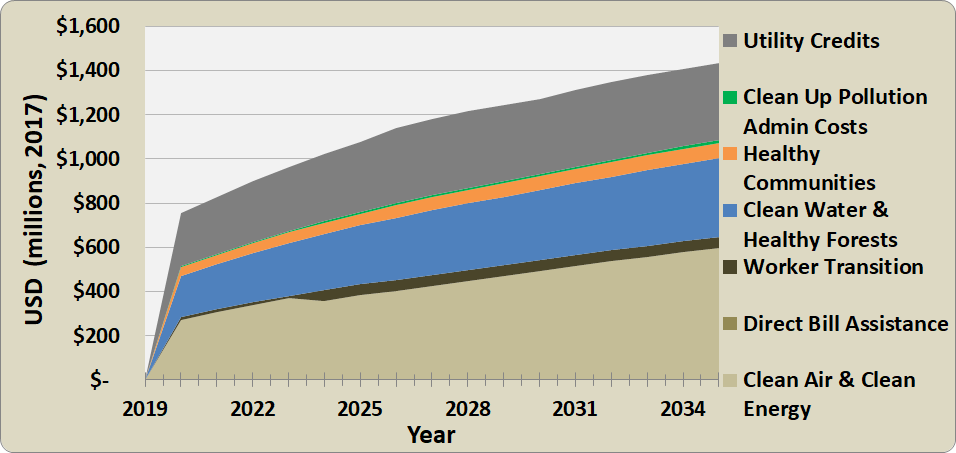
Reduction-centric scenario, Technology-Driven Investment Pathway, Fee Allocation
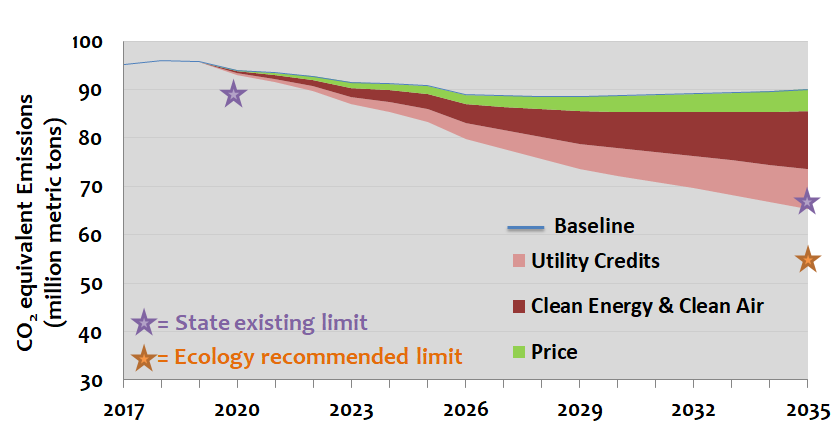
Reduction-centric scenario, Technology-Driven Investment Pathway, GHG Emissions
Reduction-Peripheral Scenario Charts
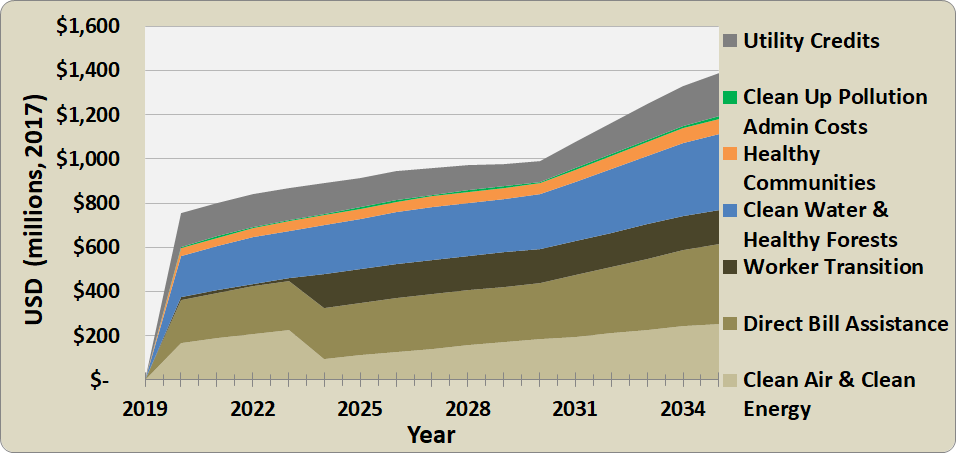
Reduction-peripheral scenario, Deployment-Driven Investment Pathway, Fee Allocation
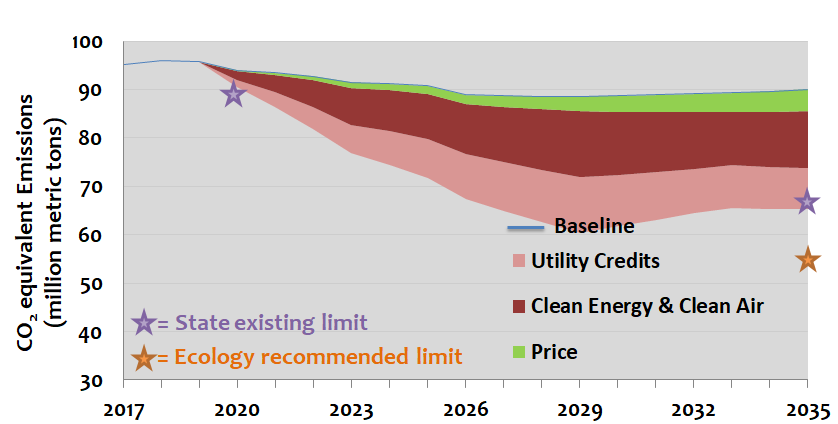
Reduction-peripheral scenario, Deployment-Driven Investment Pathway, GHG Emissions
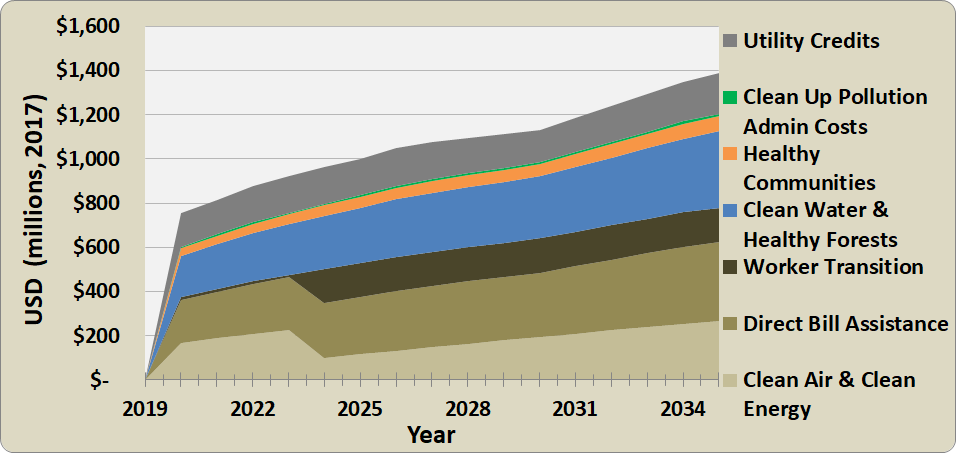
Reduction-peripheral scenario, No Change Investment Pathway, Fee Allocation
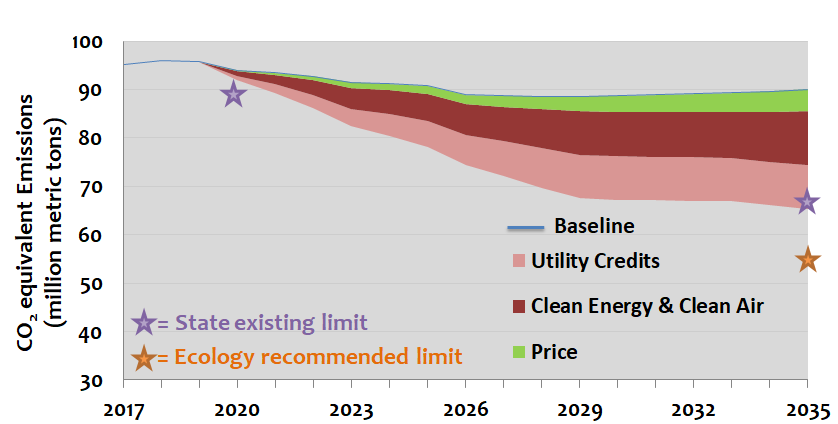
Reduction-peripheral scenario, No Change Investment Pathway, GHG Emissions
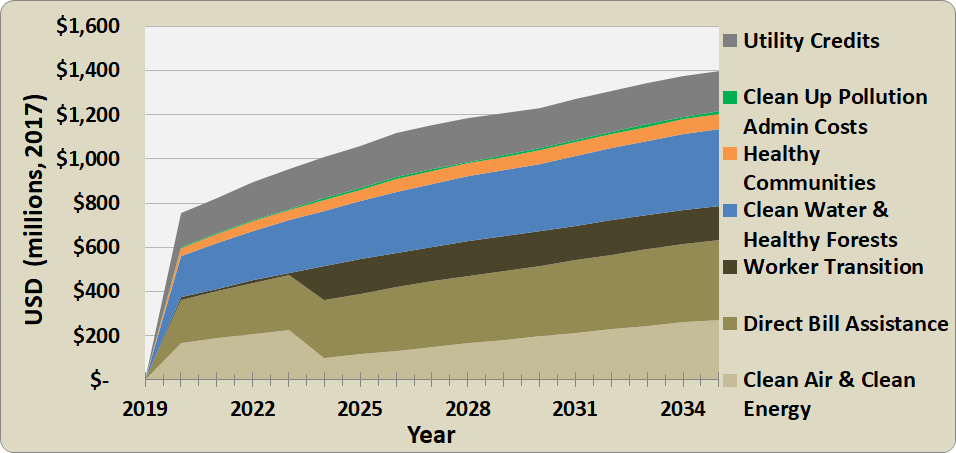
Reduction-peripheral scenario, Technology-Driven Investment Pathway, Fee Allocation
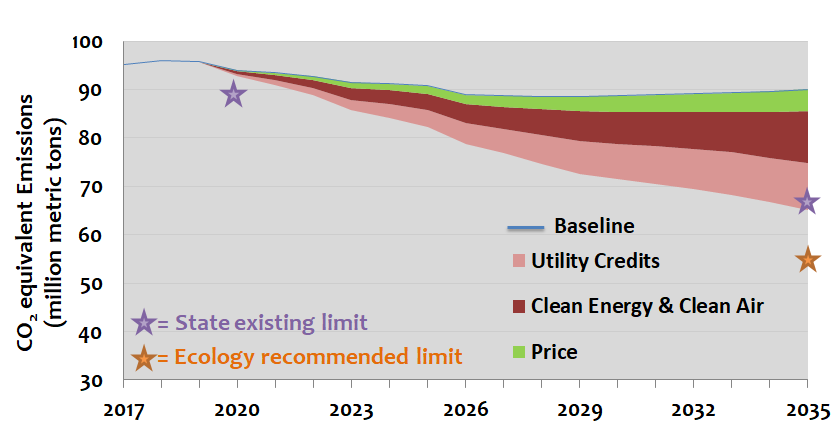
Reduction-peripheral scenario, Technology-Driven Investment Pathway, GHG Emissions
